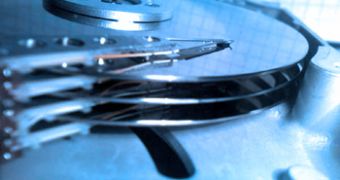Magnetic avalanches could wipe clean entire hard disk drives, so a new model of this phenomenon helps explain how and why they appear, but most importantly, how to prevent them in order to create new and more reliable memory storage devices.
Two magnets pushed together create an avalanche of magnetic activity, used to write and delete information on hard drives. As long as they don't run out of control, they are the key to currently used memory devices, like hard disk drives, but if they do, then all the information is suddenly erased.
In fact erasing information in a controlled manner relies on the magnetic head, which grazes a small patch of the drive, thus forcing the spin, or polarity to align up or down, which can be translated into ones and zeros that form data.
It's the polarity of the patch that creates a series of smaller and larger jumps in most materials, which scientists call magnetic avalanches. A new model developed by Joshua Deutsch, professor of physics at the University of California, Santa Cruz and Andreas Berger, who did the research while at Hitachi Global Storage Technologies, helps understand this effect and hopefully put it to good use in future applications.
"The big advance in this paper [appeared in the July 13 online edition of Physical Review Letters] is that in previous models of avalanches, the spin just flips from up to down as soon as they apply a magnetic field, and they're done. But that's not the way spin behaves in the real world," Deutsch said.
One small effect, called spin precession, is mostly overlooked by existing ideal models. This precession is exerted by each magnetic field on its neighbors, as the two scientists discovered. They imagined every bit of information as a small pincushion bristling with individual magnetic fields.
So, every time the drive head gets close to it, it makes each pin wobble in a continuously widening circle, before it starts settling on the new polarity. This wobbling effect is exactly the precession that looks like a spinning top that continuously draws circles as it rotates.
"It takes around a few nanoseconds for a precession to die down," said Deutsch. "That's not that fast compared to computers today. It's not as fast as the time-scale you get for a transistor to switch." But it's enough for each magnetic field to produce forces that will affect the precession of neighboring fields.
"There's a lot of stored energy in a magnet. It's sort of a battery in a way," Deutsch said. "As each spin flips from up to down, it liberates a small amount of energy that can do more work."
These combined effects can be harnessed and put to good work in future applications, to create more efficient hard disk drives in the computing industry.

 14 DAY TRIAL //
14 DAY TRIAL //